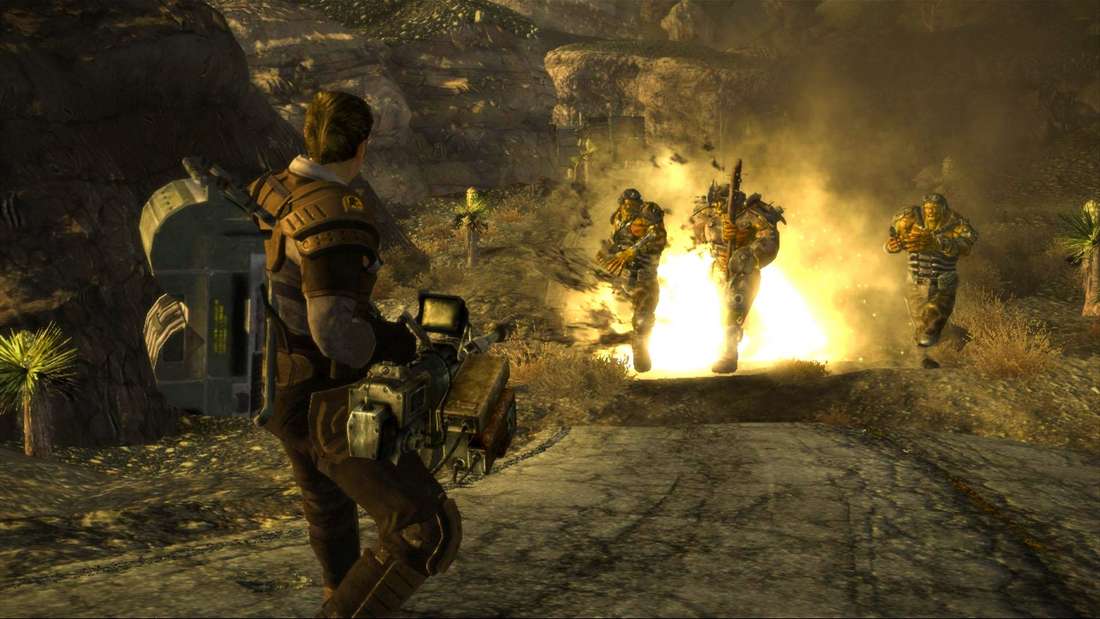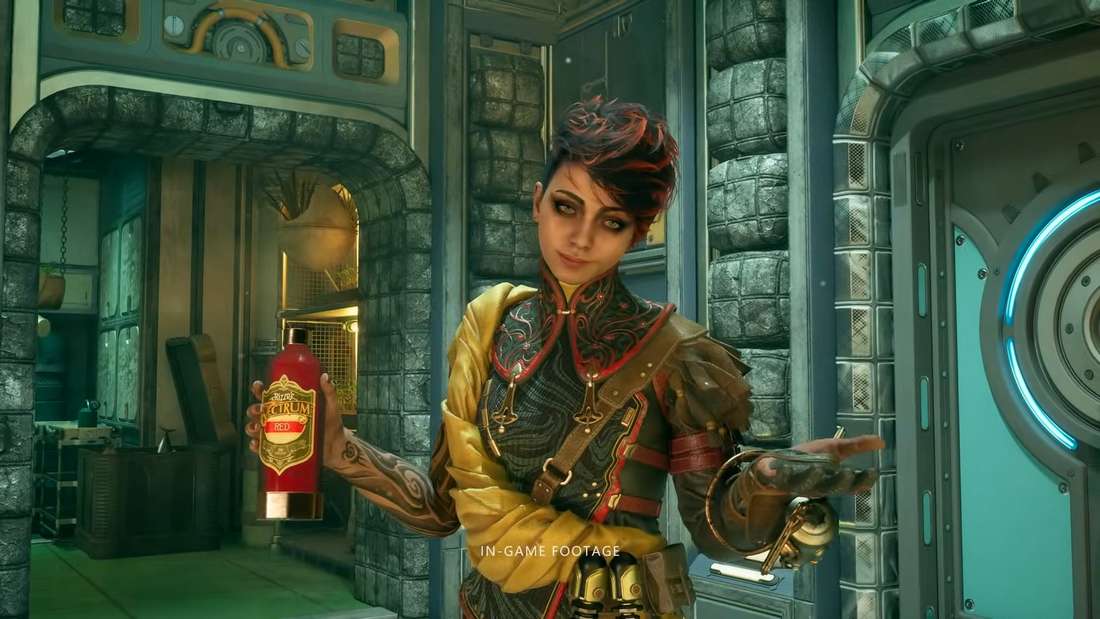The Quest for Reality in Role-Playing Games: Josh Sawyer’s Philosophy
Popular Now
 Toca Boca World
Toca Boca World
 BeamNG.drive
BeamNG.drive
 Sonic the Hedgehog™ Classic
Sonic the Hedgehog™ Classic
 FIFA 23
FIFA 23
 Counter-Strike 2
Counter-Strike 2
 NBA 2K24
NBA 2K24
 Candy Crush Saga
Candy Crush Saga
 Valorant
Valorant
 Roblox
Roblox
 God of War Ragnarök
God of War Ragnarök 
A recent, highly-anticipated interview with legendary RPG designer Josh Sawyer, known for his directorial roles on critically acclaimed titles like Fallout: New Vegas and the Pillars of Eternity series, has reignited a crucial debate within the video game development community. Sawyer, a veteran from the days of Black Isle Studios and a key figure at Obsidian Entertainment, expressed a firm belief that role-playing games (RPGs) achieve a more compelling and ultimately ‘more interesting’ state when they are grounded in reality.
His core argument centers on a powerful yet simple notion: “Once things get too magical… it’s impossible to bring it back down to Earth.” This perspective is not merely a preference but a deep-seated design philosophy that has shaped some of the most enduring and commercially successful RPG franchises in the modern gaming landscape. This news report will delve into Sawyer’s rationale, examining how this ethos has been applied across different genres, from post-apocalyptic settings to high-fantasy worlds, and the substantial impact it has on player engagement and narrative complexity.
 The ‘Post-Post-Apocalypse’ and the Material World
The ‘Post-Post-Apocalypse’ and the Material World
Sawyer’s work on Fallout: New Vegas serves as a textbook example of his commitment to material reality. While the game operates within a setting devastated by nuclear war, Sawyer emphasizes that a true ‘post-post-apocalypse’ must contend with the tangible, non-magical struggles of rebuilding civilization. He notes:
- Need for Sustenance: Even with advanced technology, characters must “have to eat, they have to drink, they have to deal with the reality of the world.” This basic biological necessity adds stakes that pure fantasy often omits.
- Economic and Political Rebirth: New Vegas’s factions—such as the NCR, Caesar’s Legion, and Mr. House—are grounded in recognizable, historical forms of governance, trade, and military strategy. They rebuild currency and complex political dynamics, a stark contrast to a simplified ‘good vs. evil’ framework.
- Historical Aggravation: Sawyer acknowledges that this ‘post-post’ approach initially “aggravated” some players accustomed to the more desolate, early-stage apocalypse of previous titles. However, the subsequent critical acclaim for New Vegas’s deep, interwoven politics proved the value of this grounded foundation for an intricate choice and consequence system.
The success of this approach highlights a critical takeaway for AAA developers: a layer of realism, even in fantastical games, is a lucrative driver of player investment and long-term replayability. Monetizing engagement through compelling world-building is proving to be a highly effective strategy.
 Pillars of Eternity and the Realism of Fantasy
Pillars of Eternity and the Realism of Fantasy
Even in the high-fantasy universe of Pillars of Eternity and its sequel, Deadfire, Sawyer’s principles remain visibly at work. While gods walk the earth and magic is a reality, the conflicts that drive the story are drawn from historical precedent and complex human relations, rather than simply an ‘evil wizard’ arch-villain.
Sawyer points out that the design for the second game’s factions was “very historically inspired,” particularly in how they dealt with colonialism, imperialism, and the conflict between native and foreign powers. In Pillars of Eternity II: Deadfire, the struggle is not just about chasing a rogue deity, but about navigating the intricate, real-world power dynamics of:
- Trade Routes and Naval Power: The factions are competing for control over valuable sea lanes and resources, a conflict ripped straight from historical Age of Sail rivalries.
- Cultural Diplomacy: The native culture’s strategic effort to “play those powers off against each other” creates a sophisticated, morally gray quest structure that resonates with real-world political struggles.
- Deities with Material Impact: The gods themselves have a grounded, historical basis in the world’s lore, preventing them from being purely abstract magical entities. They function as forces of nature and philosophy that impact the material lives of the populace.
The takeaway here is that fantasy RPGs that tackle real-world themes—such as social inequality, political maneuvering, or resource scarcity—often achieve a superior form of immersion than those focused purely on escalating magical power. The grounded context amplifies the stakes of the fantastical elements.
Industry Context: A Trend Towards ‘Crunchy’ and Deep RPGs
Sawyer’s comments arrive at a significant moment in the role-playing game market. The massive, unexpected success of deep, system-driven titles like Baldur’s Gate 3 has definitively proven that a large, mainstream audience is hungry for ‘crunchy’ RPG experiences that prioritize depth, complex systems, and meaningful choice. This market shift validates Sawyer’s long-held design beliefs, challenging the past industry trend of simplifying RPG mechanics in the name of mass-market accessibility.
This news reinforces the value of intricate game mechanics and sophisticated world-building. For investors and developers, the message is clear: the highest-value gaming assets are often those that resist the urge to ‘handwave’ reality, instead building complex systems that reward player investment and critical thinking. Sawyer’s ongoing work, including his advisory role on other Obsidian projects and his recent directorial success with the historically-focused narrative game Pentiment, confirms his continued influence on the genre. The quest for realism, it seems, is the new benchmark for excellence in high-quality RPGs.
Conclusion: The Enduring Value of Realism in Fantasy
In a genre constantly striving for the next graphical or magical spectacle, Josh Sawyer’s insistence on keeping his worlds rooted in reality provides a sobering and essential counterpoint. His body of work—from the philosophical conflicts of Eora to the socio-political battles of the Mojave Wasteland—demonstrates that by embracing the unyielding laws of the material world, even the most fantastical narratives gain a critical weight and resonance that lasts long after the final credits roll. For premium gaming experiences, the grounded approach is not a limitation, but a fundamental pillar of compelling and lucrative design.









 The ‘Post-Post-Apocalypse’ and the Material World
The ‘Post-Post-Apocalypse’ and the Material World Pillars of Eternity and the Realism of Fantasy
Pillars of Eternity and the Realism of Fantasy